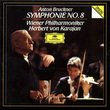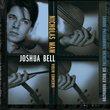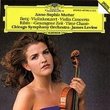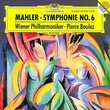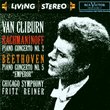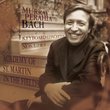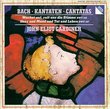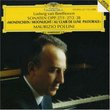| All Artists: Yehudi Menuhin Title: Great Recordings Of The Century - Elgar: Violin Concerto, 'Enigma' Variations / Elgar, Menuhin Members Wishing: 1 Total Copies: 0 Label: EMI Classics Release Date: 5/4/1999 Album Type: Original recording remastered Genre: Classical Styles: Forms & Genres, Concertos, Historical Periods, Modern, 20th, & 21st Century, Instruments, Strings, Symphonies Number of Discs: 1 SwapaCD Credits: 1 UPC: 724356699427 |
Search - Yehudi Menuhin :: Great Recordings Of The Century - Elgar: Violin Concerto, 'Enigma' Variations / Elgar, Menuhin
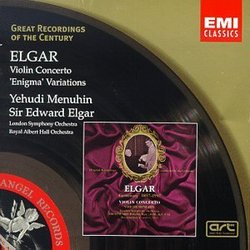 | Yehudi Menuhin Great Recordings Of The Century - Elgar: Violin Concerto, 'Enigma' Variations / Elgar, Menuhin Genre: Classical
In 1932, Menuhin was just 16 and at the very beginning of his international career when Elgar--then a grand old man in his 70s--asked the young virtuoso to record his Violin Concerto. Elgar himself conducted, and the rehea... more » |
Larger Image |
CD DetailsSynopsis
Amazon.com In 1932, Menuhin was just 16 and at the very beginning of his international career when Elgar--then a grand old man in his 70s--asked the young virtuoso to record his Violin Concerto. Elgar himself conducted, and the rehearsals went so well that the composer reportedly canceled the last of them and took the young violinist out for a day at the races. The recording that resulted from this remarkable collaboration has remained a classic from the day it was issued. Elgar's conducting is typically direct and unfussy, while Menuhin really does play the pants off of what is without a doubt the longest and most tiring concerto in the romantic repertoire. Of course, the recorded sound is rather limited and no amount of audio restoration can change that, but fans of great violin playing will still find plenty to enthuse about. --David Hurwitz Similarly Requested CDs
|
CD Reviews5 stars, but not for the casual listener. 11/27/2000 (5 out of 5 stars) "If you do not have the Elgar concerto already, do not make this your one and only choice. This is not for the casual listener who wants to sit back and enjoy a great violin concerto. If you want to do that, choose Kennedy/Rattle/CBSO on EMI which is simply fantastic. If you do decide to choose this historical document for your second or third recording of this piece for novelty and comparison, choose the Naxos label. They have the same recording for half the price so you won't be as upset just in case you can't stand the sound. Part of the notes for my Naxos copy states. " The present transfers were made from pre-war U.S. Victor sets, (the Elgar from a "Z" shellac pressing). The squeaking noises which can be heard on some portions of the Elgar are on the original masters." They are not kidding, you hear alot of junk in this recording and it is not for the sensitive listener. While Naxos does not sell direct, you may visit naxos.com for more information. From naxos.com - "How can Naxos Historical release recordings made by other record companies? Is this piracy? Internationally, sound recordings are protected for 50 years from the date of publication (worldwide, except in the USA). That means, any recording published or released to the public before 1950 is now out of copyright, i.e. in the public domain. Broadcasts are considered published the day they are re-broadcast. In the United States, the situation is more complicated. There, sound recordings were not protected by copyright until 1972, but by a variety of state laws, including the rights of the artist's personality, unfair competition, and the like. There is nothing illegitimate in releasing out-of-copyright sound recordings the same way it is not illegitimate to release Bach, Mozart, Beethoven and Mahler without paying mechanical copyright (a fee to the composer or his publisher for the use of the printed music) to their descendants or manufacturing a drug whose patent has expired." Exceptional historical document dfchen | 06/13/1999 (5 out of 5 stars) "The Violin Concerto, with the Elgar/Mehuhin partnership in 1932, must be heard to be believed. The interpretation is without peer, and the playing by Menuhin is outstanding. The sound quality of the concerto rivals many digital recordings. A must have for all Elgar fans!!!!The 'Enigma' Variations will suprise you with their tempo. The sound quality (from 1926) is less impressive than the concerto, but still good. A great pairing for an exceptional CD.Buy it today!!!" Stunning dfchen | Andover, MA United States | 07/12/2002 (4 out of 5 stars) "The solo playing has so much depth to it, I really can't believe it's a sixteen year old playing. If there's a romantic concerto in the repertoire that could really be mishandled by a young player, it would be this one - but somehow Menuhin, even at that age, has managed to express the poignancy and nostalgia of the music better than anyone ever has. Of course, the disc is not without flaws. As has been noted, you can hear the squeaking and junk from the transfer, and there are some absolutely horrendous errors in ensemble between soloist and orchestra. I've heard one of Kennedy's recordings and also Perlman's. For the most part, Perlman generally doesn't get a character that I really like, and the slow tempo in Kennedy's last movement kind of bothers me. I've also heard Shaham do this concerto live on radio with Cleveland Orchestra I believe, and it was really great. Someone should convince him to commit it to CD."
|

 Track Listings (19) - Disc #1
Track Listings (19) - Disc #1